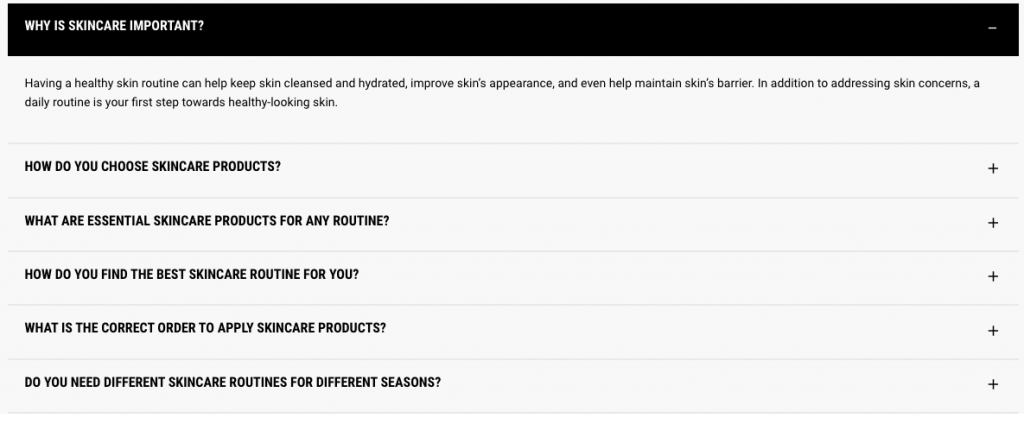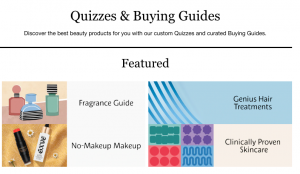Google Algorithm Update Creates Untapped Potential for Digital Brands
4 Min Read
An out-performing ecommerce brand has visitor traffic that looks like this:
- 55-65% of your visits are from organic search
- 45-55% of your revenue is from organic search
There’s no question that digital marketing managers need an organic content search strategy, and to be “out-performing” you need a great one. Your customers, especially the new ones, come from search engines. Search is also a channel where ROI can be very strong, and that’s not just our opinion.
Historically, ecommerce brands haven’t had to adopt a serious organic search content strategy to grow. Email marketing, paid advertising, and combinations of other inbound marketing did the job. That’s all recently changed thanks to a new core algorithm update from Google that went live in August 2022. In case you missed it, we want to walk you through it and explain why this should really excite your marketing team.
The algorithm tweak is called “Helpful Content Update.” In Google’s own words, the reason for this update is:
“… [It’s] part of a [broad] effort to ensure people see more original, helpful content written by people, for people, in search results.”
Creating Helpful Content is Now More Critical to Business Growth
Let’s be clear, the reason we’re bringing this information to you is because Google feels that content quality is also an ecommerce site’s responsibility. It’s not just news and information sites that will see this affect their organic rankings, it’s everyone.
Specifically, the guidelines for helpful content state that the Google algorithm is looking for these signals:
- Do you have an existing or intended audience for your business or site that would find the content useful if they came directly to you?
- Does your content clearly demonstrate first-hand expertise and a depth of knowledge (for example, expertise that comes from having actually used a product or service, or visiting a place)?
- Does your site have a primary purpose or focus?
- After reading your content, will someone leave feeling they’ve learned enough about a topic to help achieve their goal?
- Will someone reading your content leave feeling like they’ve had a satisfying experience?
- When creating content in general, are you keeping in mind Google’s guidance for core updates and to drive valuable product reviews?
In short: creating content with the sole purpose of driving rankings filled with bloated marketing language will negatively impact organic traffic opportunities going forward.
Be Motivated for the Opportunities Ahead
Most digital brands are yet to build out great user experiences that satisfy the helpful content standards. Since most brands are still learning how to capitalize on this, there is an incredible opportunity to be an early adopter and to take advantage of this update.
Another key aspect of this update is that it may level the playing field. The big brands that monopolize search results also need to adapt to this ranking signal. They’ll move slowly because of the size of their brand. This means that small and medium businesses have an opportunity to get there first. If you’re an SMB wondering how to maneuver around the Goliaths of the industry, this is the way.
Examples of Online Brands Hitting the Helpful Content Sweet Spot
Building helpful content can take time and resources, but some brands have decided the juice is worth the squeeze. Examples of sites meeting this content objective through well-structured content and functional page design are:
- Banners with clarifying H1’s and short category descriptions.
- FAQs on every category page addressing top consumer questions / issues.
- Helpful skin assessment app / routine and product buying guide linked on all PDPs.
- Robust key ingredients glossary with descriptions on PDPs.
- Robust How to use guides on each PDP.
- Robust resource / blog posting targeting top trending and helpful content opportunities.
- Most pages meeting or exceeding minimum word count guidelines to avoid thin / duplicate content penalties.
- Robust category descriptions on PLPs with helpful internal linking.
- Highly scannable key product highlights / ingredients list on PDPs near above the fold.
- Q&A functionality with high engagement / fast response times on PDPs.
- UGC feed on PDPs to drive trust and authority.
- Helpful product quizzes and buying guides.
- Robust resource / blog posting targeting top trending and helpful content opportunities.
- All pages meeting or exceeding minimum word count guidelines to avoid thin / duplicate content penalties.
- Robust PLP storytelling / description sections that target key USPs, questions, and brand differentiators.
- FAQs on every category page addressing top consumer questions / issues.
- All pages meeting or exceeding minimum word count guidelines to avoid thin / duplicate content penalties.
- Robust resource / blog posting targeting top trending and helpful content opportunities.
Our New Content Strategy Service was Built to Drive Helpful Content
“How do I start unpacking this for my team?” is a question we anticipated. To help you we have one of the best content strategy services ready to go.
Our UX + SEO Content Strategy service was created to help product managers and marketing teams hone in on the topics they should start creating to help their customers. Our team will identify the topics to grow organic search traffic and create the strategy guide for execution which your team can use as creatively as you see fit. Write about it, film it, illustrate it, or all of the above.
The most important thing to start doing is marrying new, helpful content into your ecommerce experience.
Corra can help get you started. Setup a consultation with our Content Strategy Manager today.





